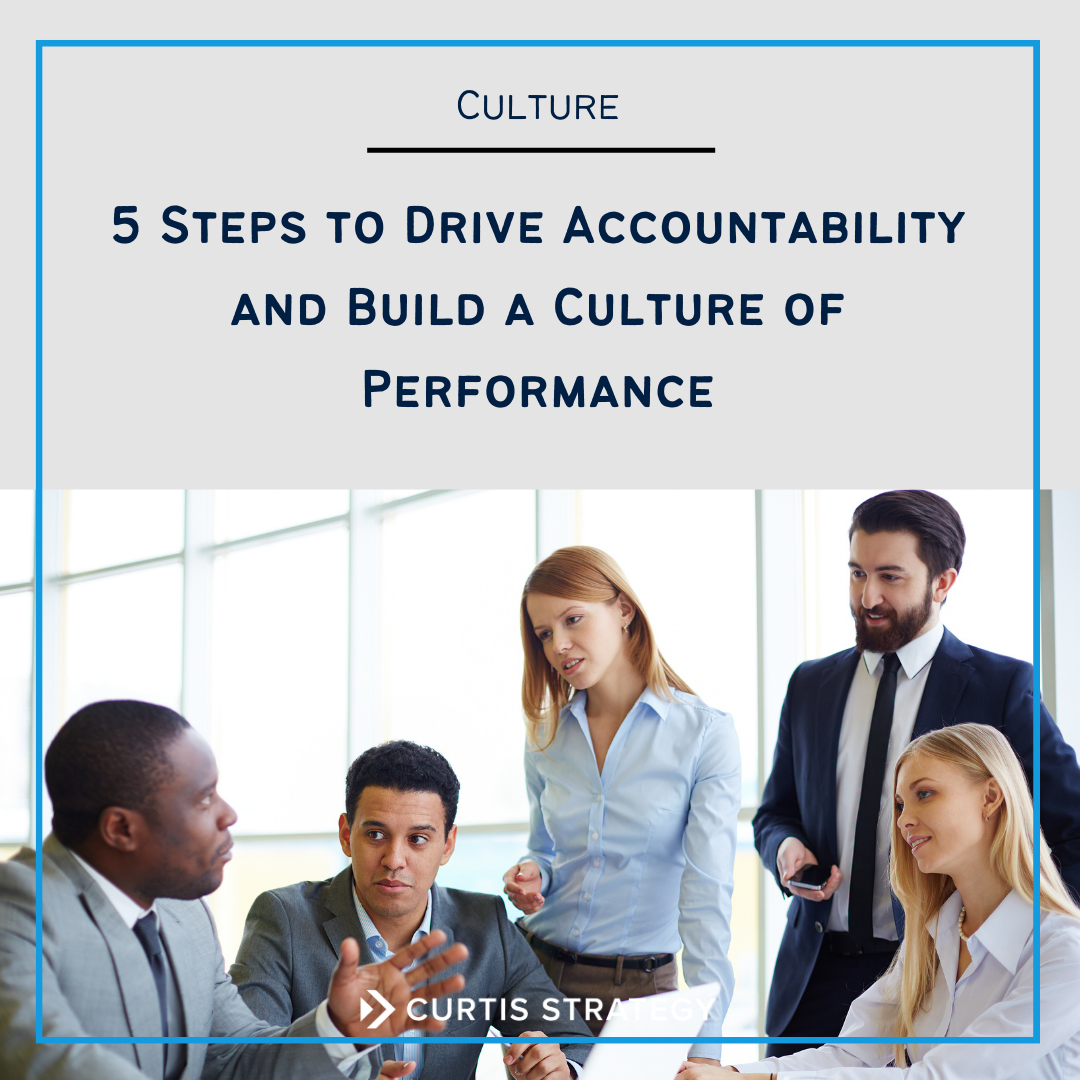
INSIGHTS

5 Steps to Drive Accountability and Build a Culture of Performance
Organizations are overflowing with data, but not all data is created equal. In order to use data to improve performance and mission outcomes, it is important to collect the right data, analyze it effectively, and make data-driven decisions.
Our nonprofit consultants recommend 5 steps to enable CEOs and COOs to use data effectively to drive the change needed to build a culture of performance.

Benefit Strategy: Keep, Cut, Create, and Communicate!
A benefits package is a great way to demonstrate how much you value your nonprofit employees. An effective benefits strategy is one that meets your employees’ needs while staying within your budget. A great benefits strategy combines employee needs, business needs, and aligns with your culture. If a merger isn’t in your future, it’s still important to reevaluate your benefits package regularly and remember to balance employee needs with the organization’s culture and budget.

Leading Through Times of Organizational Change
Change involves going from the current way of doing things to a desired future state. Throughout the change process it is the organization’s leaders—the sponsors of change—who play the most critical role in determining the success of the effort. It’s easy to lead when all goes according to plan. However, organizations typically experience challenges with implementation. While these challenges can be temporarily uncomfortable, organizational leaders should not let that deter them. Instead they need to embrace change and view it as part of their role. Organizational leaders need to be adaptable by being able to detect and respond to change. That begins by embedding change and innovative thinking into the organization’s culture.

Realign or Redesign: The Nonprofit Response to Disruptors
In order to remain relevant in the rapidly changing environment, nonprofits must face the current disruption, reassess their strategy, and decide on a path forward. Some disruptors may require just a heightened awareness while others may require a pivot in strategy.

Incorporating Innovation into Nonprofit Strategic Planning
A dynamic and effective nonprofit strategic planning process is one of the most integral parts of any nonprofit’s viability and success. From evaluating and defining the eco-system to designing the vision and focus for the future, present day strategy must go beyond the conventional to incorporate innovation through the adoption of new services and the refining of existing services..

3 Ways to Reignite Your Why When Facing Leadership Fatigue
On any given day, part of being a leader means facing and working to overcome challenges. Whether it be budgetary, staffing, or customer related, it is often considered ‘part of the job’ and, in turn, strategies are developed to help manage the stress while maintaining continued progress.
Today, having pushed so hard for so long to get their organizations through the crisis, many leaders are finding themselves experiencing leadership fatigue. Given the pace of change is not slowing down and that focus must remain on ensuring organizational viability, sustainability, and relevance, it is more important than ever for leaders to find ways to get re-energized.

The Journey Is On
It is that time of year again when we find ourselves reflecting upon the past and setting goals for the future. For leaders, each new year also brings with it the opportunity to asses where their organizations are today and what needs to be done to achieve long-term sustainability. This can often mean reinventing their organization and taking advantage of opportunities that will propel them in to the future.
While you cannot control many of the factors that will challenge your organization in the year ahead, what you can do is to adapt and evolve by reinventing the way you deliver service, add value, and build sustainability.

3 Challenges to Address Today to Ensure a Better Tomorrow
During a time of sweeping change, an organizations ability to evolve is often what will determine whether it can achieve long-term sustainability.
Today, this evolution begins with being prepared and responding to the predominant challenges brought forth by the widespread workforce crisis, the evolution of business models, and the rising level of competition.

Redefining Nonprofit Organizational Culture in Today's World
In just under two years, the way in which we think about and manage our employees and teams has radically shifted. As nonprofit leaders continue their work to fulfill the increase in staff vacancies, they must navigate the added complexity of managing in-person, hybrid, and remote working environments. Life during and after COVID will never be the same and business and nonprofit leaders must adapt in order to continue to deliver their mission and value proposition.

Is who you are today, who you need to be for the future? Part 2: Talent
Critical to organizational alignment is having the talent & requisite skills needed to drive change. If you have the ideal nonprofit strategic plan & vision for the future, do you have the capabilities, structure, talent, systems, and processes to achieve those outcomes? Capabilities and talent will determine if your organization will be able to advance to the next level of growth and achievement.

Is who you are today, who you need to be for the future?
The vision you want for your future is what your nonprofit organization needs to plan for today in order to work toward the desired outcomes and results for tomorrow. Aligning vision with culture helps everyone work toward the same goals to create success for your organization, your teams, and the individuals you serve. And while doing so, we hope that you take some time to celebrate your resilience.

If Nonprofit Strategic Planning is Easy, You’re Doing It Wrong
It has never been more critical for organizations to have a board of directors, staff, and stakeholders aligned and this begins with nonprofit strategic planning. The process brings an organization together to build a shared understanding of macro trends, to inspire and embrace new thinking, and to establish a shared understanding of the change and decision-making that will follow.

3 Often Overlooked Predictors of Nonprofit Collaboration Success
Quite often, the intrinsic value of a nonprofit partnership and the success of a deal can come down to the intangibles related to human behavior and character. While these factors may not be explicitly stated, they are often the undertone of meetings and discussions about building partnerships and planning for the future.

The Top 3 Trends Leaders are Chasing
During the past year we have been pushed into adopting technologies and digitalizing organizations faster than most thought was possible. But beyond the scramble into a more digital world, comes a level of disruption caused by the evolution of business models. The leaders and organizations that are experiencing success are capitalizing on market trends and disruption, focusing on three areas.

The Convergence
With everything converging through more advanced technological capabilities, nonprofits need to be strategically prepared to operate and remain relevant in a more tech savvy world. As an organization looking to evolve and take advantage of the convergence, our nonprofit consultants offer three factors to consider.

Making Decisions for Today While Planning for Tomorrow
Today’s nonprofit leaders are facing unprecedented challenges and are functioning in a highly unpredictable landscape. This presents the unique challenge of making the right decisions and plans for today knowing that once implemented, changes will need to be made to keep pace with the current disruptors.
We have a solution for how leaders should approach decision making and implementation in this rapidly changing nonprofit environment.

Leading Through the Unknown
As organizations continue to press forward, leaders must now operate with a significant level of uncertainty within their nonprofit sectors. The lack of predictability in the days, weeks, and months ahead can easily become overwhelming and leave leaders unable to make decisions and take action. As these organizations remain at a standstill, they can inadvertently position themselves to be left behind as others take advantage of the opportunity to transform and redefine themselves in the new reality.
To increase the probability of sustainability and success, nonprofit leaders must take on the challenge of navigating through the unknown.
